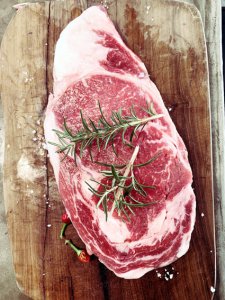I’m often asked to clarify whether ice or heat is appropriate (or correct) for treating injuries. For a long time P.R.I.C.E. has been the recommendation, and it makes a lot of sense:
 P – Protection: Logical. Remove your injured area or yourself from the location or mechanism of injury. If your hand has already sharply recoiled from a hot stove, or you find yourself panting for breath in the upper branches of a tree, your nervous system probably got this covered automatically. Otherwise call for a stretcher and orange slices and sit tight.
P – Protection: Logical. Remove your injured area or yourself from the location or mechanism of injury. If your hand has already sharply recoiled from a hot stove, or you find yourself panting for breath in the upper branches of a tree, your nervous system probably got this covered automatically. Otherwise call for a stretcher and orange slices and sit tight.
R – Rest: Sure. If it hurts to move, or you’ve done yourself damage by excessive movement, take a break for a bit. Try very hard not to repeat the movement that caused you the damage. That’d just be foolish. Yes, I’m talking to those of you who ‘just carried on’ after feeling a sudden and intense pain during high impact activity but you limped on regardless. It won’t be the end of the world to stop for the rest of the match, honestly.
I – Yes – Ice! Good idea straight after an injury. Great if you have it right on hand, perhaps if injury is sustained at a picnic or during a relaxing-beer-gone-wrong. More on why later.
C – Compression: If something’s bleeding, it needs stopping up quick-smart. The easiest way to do this in a crisis is to either apply pressure with a free hand for a minute or more until the bleeding stops, or dramatically rip your shirt sleeves off and use as a tourniquet.
E – Elevate: Not quite the same as getting up a tree to escape, more elevate the body part above your heart so blood isn’t just being pumped straight out of the hole you just made, or into the swelling that’s alarmingly accumulating. So arm above head, or another big tick for the very underrated ‘Putting Your Feet Up’, depending on where your injury is.
So far so good, right? PRICE is most excellent for immediately after an injury. I suspect most parents will also agree with my addition of D – Distract. Though this is for many actual scientific reasons rather than just avoiding tearful dramatics. Through a wonderful mechanism called the Pain Gate, our sensitivity to pressure, temperature and vibration are all greater than our sensitivity to pain. So as we automatically rub our knee after banging it, the nerves that transmit this sensation to the brain actually overtake the ones transmitting pain. So yes, please distract your brain. It won’t heal the injury, but it will reduce the shock impact to the brain by distracting it and literally giving it something else to think about.
Ice is one way to distract, by giving a strong input of an unusual temperature (remember injuries tend to immediately get hot, due to an influx of blood and inflammatory chemicals) so ice can actually ‘numb’ the pain temporarily through distraction.
It also helps to reduce the swelling, which can sometimes appear almost comically large. Cold tends to restrict the blood vessels, therefore reducing fluid arriving at the area to some extent.
So PRICE, and Ice, are good. When are they not good?
The Problem with PRICE
The problem with PRICE is not PRICE itself, it’s how long we believe it’s helpful for. It’s really intended for use in the first 48 hours after injury – after that we need to pick and choose what to use. Ice in particular can be helpful for a few weeks, but in ever-decreasing frequency, and certainly isn’t your only method of healing. In fact, as it reduces blood flow and swelling, both natural parts of the healing process, repetitive and constant cooling can actually slow down your healing.
Because PRICE is mostly what people have heard of, they often rest up for weeks, ice religiously throughout the day, and continue avoiding the movement that hurt them… oh and a few other movements just to be sure, and perhaps walking is a bit dangerous now… (etc). These not only aren’t helpful for healing the injury or promoting proper rehabilitation, crucially it sets up fearful health behaviours which, and I don’t want to over-dramatise, can ultimately end up being killers.
For example, one of the most impactful and pernicious causes of falling in the elderly is… fear of falling. Yes, of course, it’s not nice to fall, and we are right to be cautious and mindful of not dancing recklessly on the edge of steps. But to lose mobility and confidence in your own capacity to stay upright actually makes you more likely to fall. Yes this may seem an extreme example, but our bodies are with us throughout our lives and these health behaviours and fears can start at any time and get exacerbated as we age. So yes, please, sign up to that Tai Chi class sharpish. And take your mum.
Heat
 And this brings us to heat. I love heat. Mainly because I see patients when they are fed up with freezing peas and feeling stiff, rather than dealing with them at the moment of injury. Muscles love to move, and they love to be warm. It brings lovely oxygen rich blood to the tissues, movement promotes the removal of waste through our lymph system, and as we all know, the more you move, the less you creak. So we can generate heat, of a sort, simply by gently moving our limbs and our bodies, in the pain free range.
And this brings us to heat. I love heat. Mainly because I see patients when they are fed up with freezing peas and feeling stiff, rather than dealing with them at the moment of injury. Muscles love to move, and they love to be warm. It brings lovely oxygen rich blood to the tissues, movement promotes the removal of waste through our lymph system, and as we all know, the more you move, the less you creak. So we can generate heat, of a sort, simply by gently moving our limbs and our bodies, in the pain free range.
As a general rule, apply heat where you feel stiff. It’s not great directly on swellings or bruising – at all – so avoid this, as it’ll only exacerbate them. Use a wheat bag or heat pack (following manufacturer instructions) and lay it on the stiff or knotty area for 10 minutes or so, checking every few minutes that your skin is now nice and warm, and a little red, but definitely not starting to blister, bleed or go numb. So for a swollen ankle, for example, heat the muscles that feed into the area – your calf muscles, or perhaps the underside of your foot. Feel free to ice your swelling and bruise if it’s still a virulent purple colour. If it’s gone brown, you’re probably out of the PRICE zone now.
Take your time, this is TLC, right? Give yourself a sit down and relax while applying the heat pack, and your injury and your brain will love you more for it. Don’t forget injury repair is a whole body experience – your brain, your cardiovascular system, your immune system, and the one system to rule them all: the gut – all benefit from a short sit down and a break from daily stresses.
The Problem with Heat
I’m kidding, there isn’t one. I love heat. Just make sure it doesn’t give you an injury in itself (as above) and don’t use it as the miracle cure for your injury – it’s not a one-hit wonder (see ice, above).
Introducing M.E.A.T.
 So what if you’ve hurt your shoulder, and it hurts to move it? But it’s been weeks and you’ve rested, and it’s not going away. I get it, it’s natural to get frustrated, grumpy and stiff if you hurt. But the science says there’s a few things you can do to actually reduce the pain and promote healing actively rather than hiding from it and hoping it’ll go away. As you’ll find in a few months’ time when your back is still hurting when you put your socks on, many injuries don’t just spring back after a long weekend of bed rest.
So what if you’ve hurt your shoulder, and it hurts to move it? But it’s been weeks and you’ve rested, and it’s not going away. I get it, it’s natural to get frustrated, grumpy and stiff if you hurt. But the science says there’s a few things you can do to actually reduce the pain and promote healing actively rather than hiding from it and hoping it’ll go away. As you’ll find in a few months’ time when your back is still hurting when you put your socks on, many injuries don’t just spring back after a long weekend of bed rest.
M.E.A.T. stands for:
M – Movement: If you forget everything else, remember this. We are made to move. Our bodies love to move, our brains love us moving. Everything is well with the world when we can move well. So yes your shoulder might hurt lifting 70kgs at the gym. Or it might hurt lifting a cup of tea. But unless it’s dislocated it probably won’t hurt to brush your teeth, or scratch your back or do some stretches. Move as much as possible in your pain-free range. You’ll soon see that this range, and the range of movements you can do, will start to increase.
E – Exercise: Yes! Movement is obviously the most basic of exercise, so do that first, and as soon as possible return to exercise. Don’t give up the things you love, and modify the things that hurt. Exercise again promotes lovely healing blood flow, moves the body (see above) and boosts your mental health and feelings of control of your situation. Do it! (just don’t do the specific movements that hurt. Until they start to not really hurt. Got it?)
A – Analgesics: The point of analgesics is pain relief. Your drug of choice depends on the nature of the injury – if you have a nerve injury, painkillers specific to nerve pain will be most effective. If you have swelling and inflammation, then an anti-inflammatory will be best. Always start as small as possible (usually paracetamol) and only go onto the hard stuff if you really need to, and for the shortest time possible, as they can cause other issues that nobody needs (constipation anyone?).
Please remember, I’ll say it again – analgesics = pain relief. Ice does that. Movement in the pain-free range does that. Chilling out and meditating does that. Acupuncture does that. A decent night’s sleep does that. Even positive thinking does that. The brain can create its own analgesics. Try out these non-medical non-pharmaceutical options. You may be surprised at the awesomeness of your body’s systems.
T – Treatment: Do please note, all the above is General Information Only. It’s intended to save you and the NHS money by avoiding the need for an appointment for minor injuries, but if you are at all concerned and issues haven’t settled within a week, then it’s only sensible to get booked in either to your GP, or more likely if it’s a sports or musculo-skeletal injury, a Physio is your best bet. Any Physio worth their salt will go along the lines of the MEAT option, because after 48 hours PRICE loses its validity gradually and will mean your rehab will stagnate. They should progress you appropriately according to their assessment and your feedback.
Also, some areas you just can’t get to easily – middle of the back, the neck, that funny bit just behind your thigh – and a therapist can give you a big leap forward in feeling better, sometimes even in just one session. I’ve dealt with muscle knots that are the result of a car crash… 20 years ago. I kid you not. The guy had put up with pain all that time, and rested, and iced whenever it flared up, and hoped it would go away. He’d severely limited his lifestyle and aspirations because nobody had supported him to progress things on. We worked on it together with manual therapy, heat, movement and specifically tailored exercise, and he got his back back. And to a certain extent, his life. Exciting stuff.
After all, meat is what we’re made of! So dust off those gentle yoga videos, put that hot water bottle on standby and put your Physio on speed dial. You’ll recover faster, and better, for doing so.